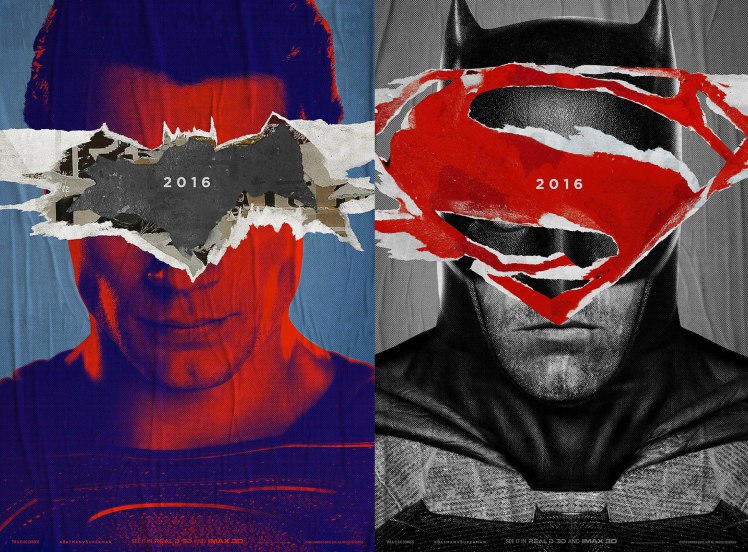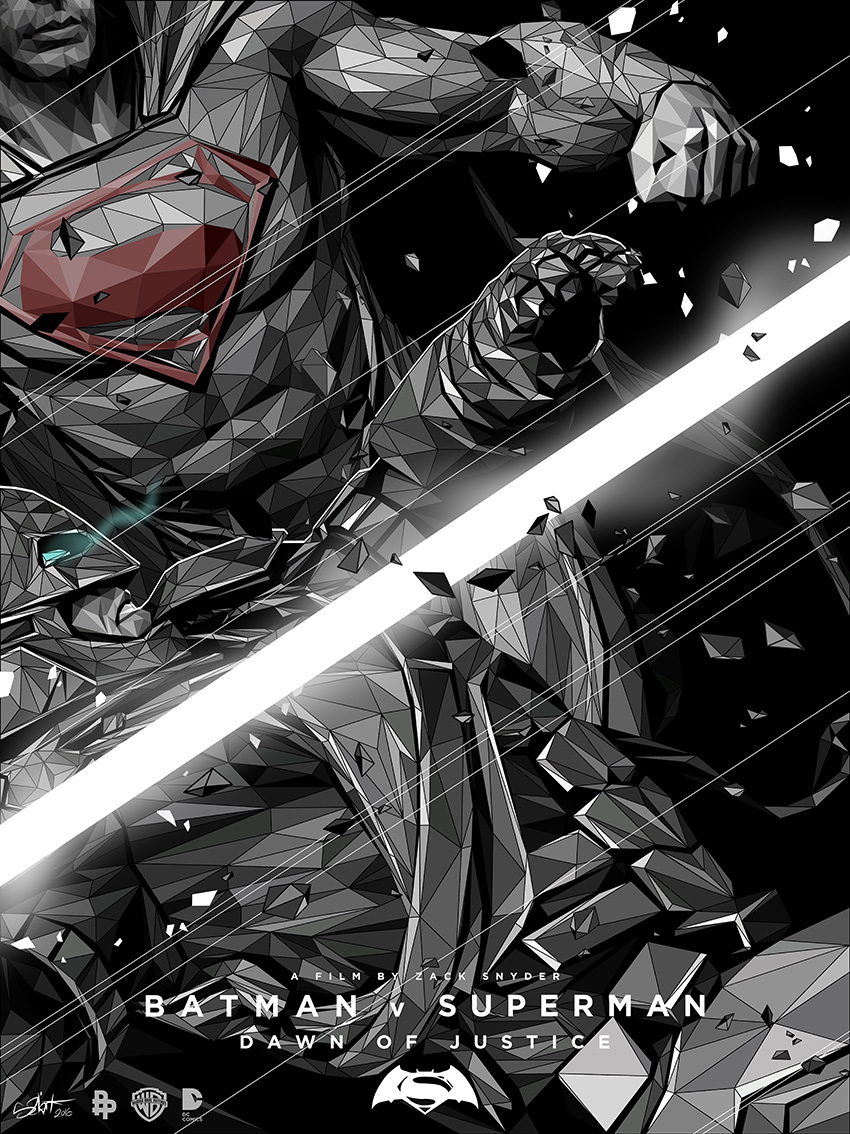It's All An Act! Batman v Superman: Dawn of Justice - Ultimate Edition
Breaking the act structure of Batman v Superman: Dawn of Justice Ultimate Edition By M.Schinke
Greetings and welcome back, Opinionnerds…
(Note: This article has been updated to reflect a new evaluation in regards to there second turn in act 9)
This is a piece that has been a long time a-comin; not because it has taken me this long to write it, but because it’s taken me this long to decide to write it. In the almost two years since the theatrical release of director Zack Snyder’s Batman v Superman: Dawn of Justice the movie has racked up a considerable amount of criticism for it’s seemingly impenetrable structure. From the story, to the plot and to the characters themselves there has been an incredible amount of material generated that seeks to outline everything that movie does wrong. There have been a number of pieces of defense written that seek to dismantle some of the more rhetorical opinions and put aside simple issues such as a misreading of the text (as I’ve done myself) but I’ve seen very little work done to break the movies structure and lay it out in a way that attempts to show how the plot moves from piece to piece; building the story through from beginning to end. Though an understanding of the structural elements of the movie is not necessary to view and enjoy it, the issue has been raised as yet another tool to bludgeon the movie with in an attempt to completely dismantle it as a legitimate piece of work. The main criticism is that the film does not fit snugly into three acts. Of course, there are multiple reasons why this criticism is not deserved for this film.
I’m not going to spend too much time rehashing the information I shared in my It’s All An Act! on the similarly lambasted Man of Steel, also directed by Zack Snyder, but I will point anyone interested to this article written by FILM.CRIT.HULK, a critic and writer who has grudgingly earned my respect, as well as the glossary of JohnAugust.Com which has a couple of good definitions. In short, the three act structure is a misrepresentation of the idea that a story has three stages; a beginning, a middle and an end. While this is true it has somehow been stretched and morphed into the so often repeated idea that the structure of a play or film has, essentially, three parts to it; those parts being the individual acts. Act one is the beginning, act two the middle and act three the ending. Most likely this false idea was created as a poor extrapolation of certain styles of stage plays that feature three acts as a way to teach the basics of story structure. These acts are usually easy to peg as they occur between curtain falls, often to cover set and wardrobe changes. The three act stage play is a specific type of style which itself doesn’t even cover the vast amount of productions undertaken or the varying approaches to the writing there of. It is a simple, reductive way to illustrate story flow for people who aren’t writers, but it’s hardly a worthwhile metric to use when performing a scholarly analysis of a film. When it comes to the number of acts a screenplay can have I will reiterate the best rule I have yet seen; as many as it takes to tell your story.
Now, not to get the concepts confused; an act is not exactly like a chapter in a book but how they are used is not dissimilar. When reaching the end of a chapter, or an act, ideally there would be something to propel the story into the next part. This can involve the revealing of new information, the choice of a character to engage in an action or an event that occurs outside the characters control that they have will have to deal with. Whatever the device at use, the idea is that the story now has to move forward in a new way. The act may not end specifically on this beat, but this beat will mark the end of that act.
Let’s Break It Down
As we discussed in the a fore mentioned article on BvS, the films plot is broken into four separate story lines among it’s main characters. This, admittedly, puts a lot of strain on each act as they must support each characters involvement in the overall plot while providing space for each characters story to evolve. I feel an important item of note is that while a commercial film like this one does serve as an entertainment product it is still a creative, artistic endeavor. The choice to pack so much into the movie is neither right nor wrong; it simply is. It can be considered more or less successful in it’s function to communicate but there is no rule as to how much or how quickly this has to happen. A piece of writing does not need to be immediately resolvable to still be effective at communicating what it intends to; especially if the intention is for that communication to be complex. So the fact that there is so much happening in the film should not be seen as a negative. The reality of there being, “too much going on” or a film being, “overstuffed” with plots or ideas does not exist. If the storyteller feels that they were able to include all of the elements that they wanted and communicate them in the manner they intended then the film is at least a creative success on that level. The rest is up to how much an audience is willing to invest of themselves in interpreting the communication. I’ve said it before but everything you need to follow and understand this film is up there on the screen. The storytellers have done their part; the rest is up to us.
So how does the film break? Honestly, cracking it seemed a daunting task at the outset of this project. The Ultimate Edition is a 3 hour film following four distinct story lines running inside an over arching plot constructed to obfuscate the main antagonists movements and motives until they all come together for the finale. There are a lot of moving parts in there and the acts tend to run very smoothly into one another with very few hard breaks. There were more than a few times when I felt a particular dramatic moment or story point would make a good break, only to find upon re-examination that information that came after was still relevant to the act, and there fore a more suitable point at which to place the break. In this instance I’ve opted to include the rough time stamps where I feel the acts begin and end for those who would like to, “check my work”.
As always, I make no claims that this break down is, “correct” in any way. I’m using the tools I have to the best of my ability, and I reserve the right to be wrong. So, on that note, lets get to the raw outline before we delve into how each act works to build the story.
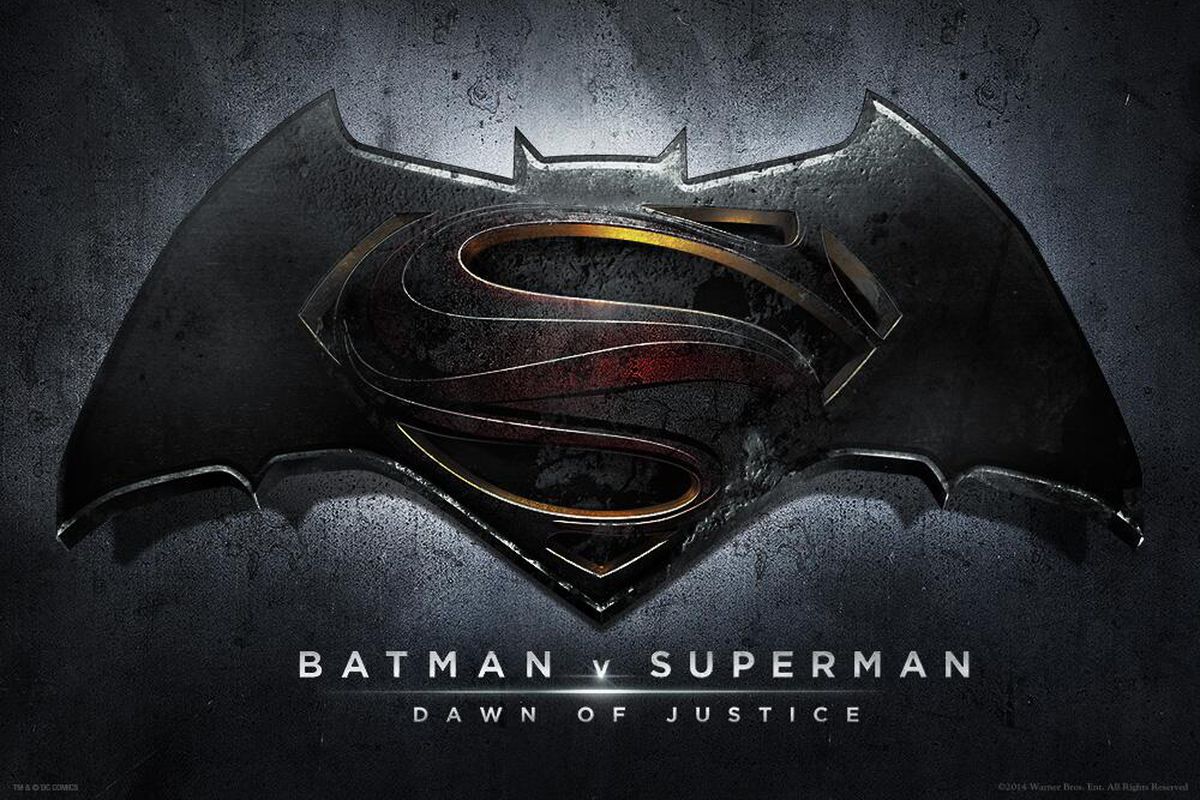
The Act Structure of Batman v Superman: Dawn Of Justice – Ultimate Edition
Prologue 1, 0:00 – 4:50: Begins with the Wayne’s funeral and ends with the white out
Prologue 2, 4:50 – 10:08: Begins with the, “Superman” card and ends with the smash to black
Act 1, 10:08 – 23:42: Starts with the Kryptonite search, ends with the discovery of the Bat-brand
Act 2, 23:43 – 33:42 – Starts with Lois on the street, ends with Luthor licking his fingers
Act 3, 33:43 – 43:06 – Starts with Clark making eggs, ends with shot of painting in Luthor’s den
Act 4, 43:07 – 56:43 – Begins with Bruce’s nightmare, ends with Martha and Clark on the phone
Act 5, 56:44 – 1:14:10 – Begins with Lois at the lab, ends with Perry at the Planet
Act 6, 1:14:11 – 1:31:37 – Begins with White Portuguese, ends Bruce close up
Act 7, 1:31:38 – 1:41:45 – Begins with Superman helping, ends with Lex in the scout ship
Act 8, 1:41:46:38 – 2:02:22 – Begins at the Daily Planet, ends with Diana and the videos
Act 9, 2:02:23 – 2:14:55 – Begins with Batman in the rain, ends with Lois and the spear
Act 10, 2:14:56 – 2:28:48 – Begins with Anatoly and Martha, ends Swanwick and the President
Act 11, 2:28:49 – 2:42:01 – Finale, Begins with DoomsDay eruption, ends with Lex shaved
Act 12, 2:42:02- 2:54:44 – Planet headline, Batman and Lex, funerals
Appropriately, there are more acts in BvS than there are in MoS given their respective lengths. Where MoS has 9 acts with prologue and epilogue, in this evaluation BvS has 12 with an interesting dual prologue and no epilogue. This isn’t a new approach to storytelling in film but it is one that requires more work on the part of the audience to follow and there are many that feel it was too much to ask for given the density of the film and the sometimes oppressive nature of it’s delivery.
Looking at the time codes you can notice a certain rhythm to the breaks; one roughly every 10 to 15 minutes. Though I have not run a comparison with the Theatrical cut, it’s clear that the edits made to that release did more than remove information from the film. The rhythm of the acts must have been severely compromised by the removal of 2 to 3 acts worth of material, which likely led to the stuttered, disjointed feeling that version of the film had. Not every act would suffer from the removal of one or two minutes of footage but some of the earlier acts, especially the ones deal with Clark Kent’s story, would have felt oddly truncated and aimless. Again, it isn’t just the information that was lost, but the ebb and flow of the acts as they build upon one another. This editing of acts is just as important, if not more so, to the pacing and flow of the film as inter scene cutting, or how individual shots are placed against each other in a scene.
With that said, let’s go through the acts one by one, see how the arcs of the acts are built and, finally, how they build upon each other to form the complete film.
Act Overview
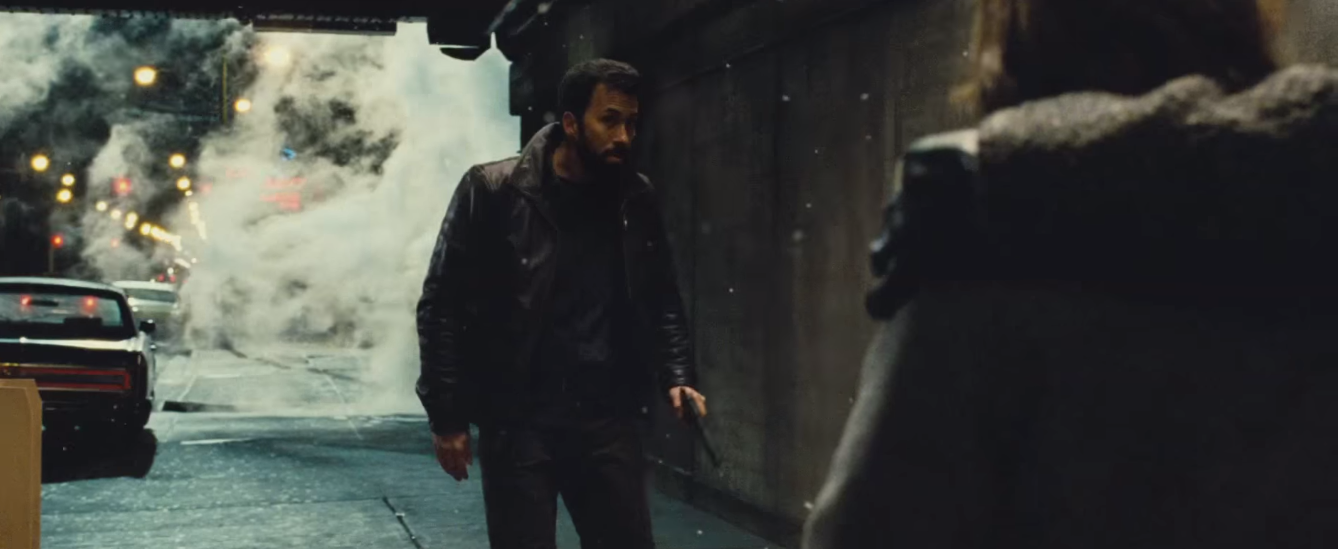 Prologue 1 – The Wayne’s 0:00 – 4:50
Prologue 1 – The Wayne’s 0:00 – 4:50
Book ended by narration from Bruce Wayne we follow two separate pieces of storytelling in the murder of Thomas and Martha Wayne and how Bruce behaves during their funeral.
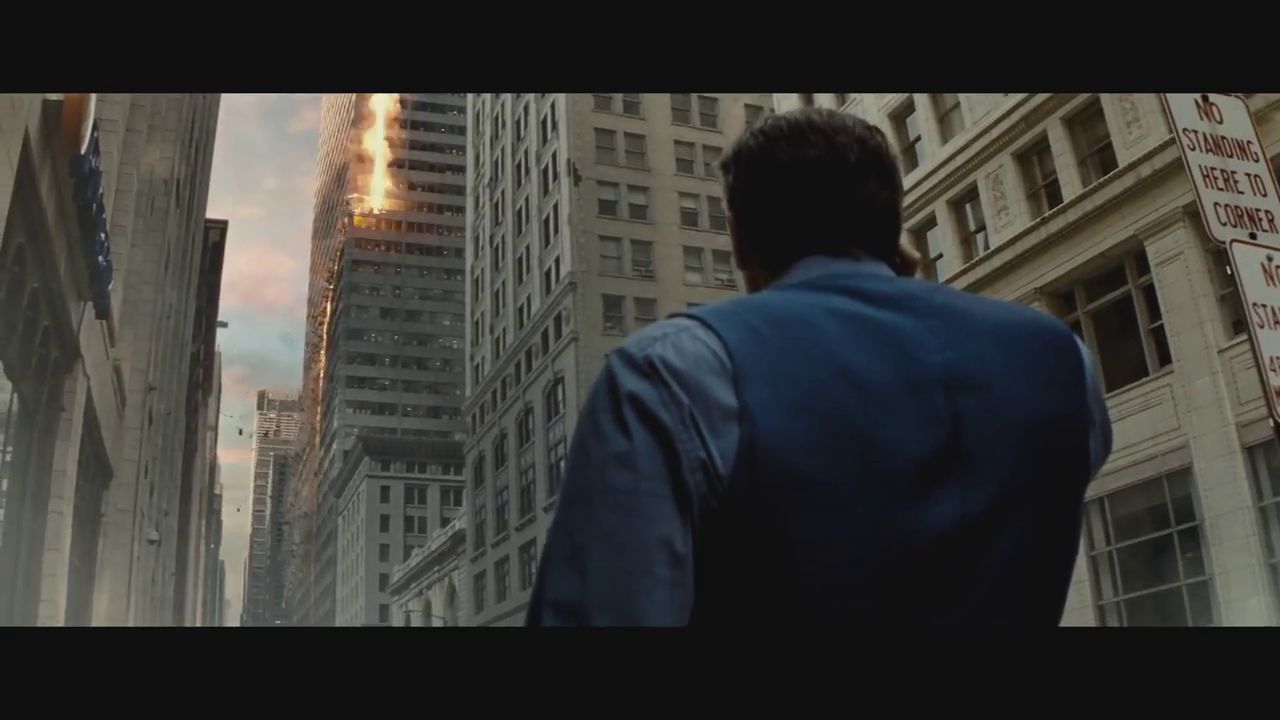 Prologue 2 – The Black Zero incident 4:50 – 10:08
Prologue 2 – The Black Zero incident 4:50 – 10:08
In this section we track Bruce Wayne as he interacts with the finale of Man of Steel, the incident that introduced this version of Superman to this films universe. This part of the prologue segment serves to provide the red herring for Batman’s motivation in the film.
I have developed an outlook on movies where I believe that, in general, the first scene of a film will give you an impression of what kind of experience you are in for. Be it funny or sad, action packed or sedate; you can usually get a pretty good gauge of whether or not you’re going to want to be on board for the rest of the ride. I think that is very evident with these prologue sections. We immediately get a bout of dual storytelling that we have to follow, as well as a bit of dream logic. We then have a loud, action packed piece of melodrama that ends on a relatively impressionistic note. If that doesn’t sum up how this particular movie plays out in total I don’t know what does.
As I pointed out in both my Avenging Incidentsand Losing, Finding and Keeping The Faitharticles, I cannot stress enough the importance of absorbing the information in the first prologue into your evaluation of the film. It’s easy to dismiss the first prologue as information we already know and accept the second, the Black Zero incident, as the, “inciting incident” for the film but in doing so you miss very important character pieces that help you to understand not what Bruce is doing but whyhe’s doing it. Without all the information in both prologues to guide you, not just the, “Martha” name drop or the leveling of the Wayne building, his feelings while contemplating killing Superman cannot be fully understood. It’s not just the name that matters; it’s everything.
Of course the prologues also introduce this movies version of Bruce Wayne and a man called Wallace Keefe, who will come to play a larger role later on. We also see the Bruce Wayne that we lose after this incident; the man that would run into a building collapse because he believes he can do something. It may or may not be significant to notice but this is the only time in the film other than the flashback to his parents murder that we see Bruce wear any color other than black, white or gray. Is it important? I don’t know; but it’s interesting to think about. This is the Bruce Wayne people think thought they would get in the film, and the loss of that part of the character is important to how the film plays.
A reasonable question to ask is whether or not this information needed to be presented this way and the answer is; of course not. There isn’t anything that would prevent the important pieces of information from being filtered through the rest of the film in some way but the fact is; it was produced this way. These scenes were included in the film in this way for a reason and it is to ones own detriment that these scenes be discarded as irrelevant.
Part 1
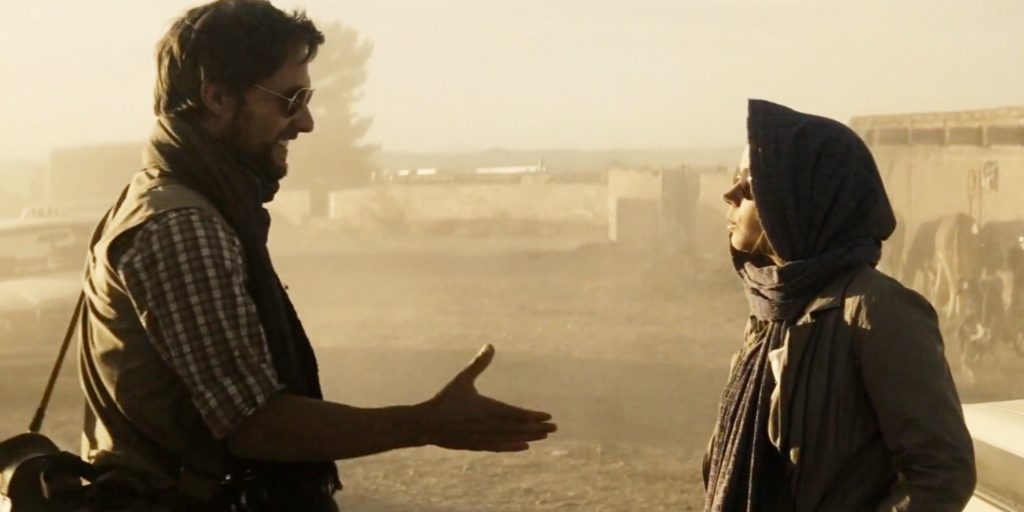 Act 1: It begins, 10:08 – 23:42
Act 1: It begins, 10:08 – 23:42
Act 1 establishes the inciting incident with the discovery of the Kryptonite and sets off the films main plot with the Nairomi incident. In addition to introducing Lois Lane and immediately establishing her character, we are introduced to three recurring characters; Anatoly Knayazev, Senator Finch and Kahina Ziri, as well a visual introduction to Mercy Graves. We are also given our first, proper look at Superman and Batman in this film.
Act 2: Quiet introductions and obfuscations, 23:43 – 33:42
I look at act 2 as the introductions to the people behind the heroes. Where act 1 showed us Lois, Superman and Batman, “on the job”, act 2 introduces us to their private lives in addition to putting their stories into motion. We see how they interact with the people closest to them. These scenes continue to illustrate the difference between Bruce and Clark; Clark tries to have a normal life outside of the cape where as Bruce continues to work no matter where he is. Bruce’s inner world is also far less warm and soft than Clark’s and his interactions with Alfred are, of course, much different. In any event the picture being painted is of two men who are approaching life from very different places.
Lex’s introduction begins to build his story, laying the foundation for his relationship with Senator Finch and introducing what he want’s for the film. I find it interesting that initially, both Lex and Bruce are not being honest about their reasons for pursuing their goals. Even Lois doesn’t initially tell Clark what she’s up to, hiding the bullet she found from him. It becomes apparent very quickly that Lex is up to something that is not above board. The only one of the main characters in the film that is never dishonest about what they want or what they are doing is Clark.
Act 3: Breaking out the stories, 33:43 – 43:06
Act 3 leads with Clark and remains focused on him as we see both sides of his plot; both as Superman and Clark Kent. On the one hand we have Kahina Ziri and Wallace Keefe representing the human side of Superman’s story; The Superman Question, as it were. On the other hand we have Clark’s story being introduced. Initially he seeks to question Kahina Ziri but will transition to his Batman investigation when he is introduced to him via the people he meets in Gotham. We transition to Bruce following up and furthering his investigation into the White Portuguese with Anatoly Knayazev, then back to Clark now asking why no one is reporting on Batman’s activities and encountering his first bout of human apathy as Perry White shuts him down. Lois’s story gets moved along a bit and we see a bit more of the relationship between she and Clark in small moments in the Planet offices. Finally, the antagonism between Lex and Senator Finch is established and Lex will now have to change his plans to get the Kryptonite.
Act 4: Getting into character, 43:07 – 56:43
Act 4 leads with Bruce and focuses on furthering the emotional foundations of Bruce, Clark and Lex’s stories. The first three minutes of the act is rapid character building for Bruce and you get a lot of information in those three minutes that is very important to understanding Bruce in this film and what he needs to overcome. Next you get a look at Lex’s emotional state of being during his speech. Finally, the act concludes with Clark reaching out to his mother after the, “must there be a Superman” montage. The middle part of the act is used to further both Bruce and Clark’s stories while introducing Diana to the film by entwining her in Bruce’s plot.

If one were to insist on breaking the film into three acts, or to pinpoint the, “beginning, middle and end” portions of the film I believe this would definitely qualify as, “Act 1”. While I don’t believe the act structure of the film, by observed definition, supports all of this being considered one act, I can see it being described as part one, or the beginning, of the overall plot. At this point we have introduced all of the characters, their initial situations and their reasons for acting. The next acts, or part 2, will begin to complicate the individual plots and deepen the stories for each character.
The popular opinion is that the plot jumps around from scene to scene with no apparent rhyme or reason but I would argue that there are numerous, clear transitions that move the story along through the scenes. This is sometimes done through overlapping dialog; the tail end of dialog from one scene running over the opening of the next. Another example is the linking of ideas. For instance, the beginning of act 3 has Clark listening to Kahina Ziri talking about Superman and asking how he decides, “which lives count and which ones do not”. This dialog leads directly into the next scene overlooking Wallace Keefes wall of Superman’s good deeds since the Black Zero Incident; showcasing him potentialy deciding who lives and dies by who he choses to help. While the necessities of editing and plotting obviously don’t always allow for this, more often than not scenes will smoothly transition from one to another; a flowing language that admittedly defies more easily read editing techniques.
We get our first glimpses of Superman and Batman in this first act and each of them is given an introduction befitting of their character; Superman is portrayed like a powerful force of nature that swoops in to save the day, leaving shafts of sunlight in his wake, while Batman is shown blurry and out of focus in the shadows, frightening people and scampering away into the night like some dark creature. For those that claim the movie does not establish a difference between the characters these introductory scenes being to do just that.
The football game the cops are watching helps establish the relationship between Metropolis and Gotham, with the scene further illustrating the contrast between the shiny buildings of glass and steel seen in Man of Steels Metropolis and the run down factory city of Gotham. This scene establishes the Port of Gotham, which will be an important location in the film, as well as Batman’s connection to it. The act also introduces the Bat brand and the only criminal we see with one, who will also return later.
Act one serves as the jumping off point for the films plot but also for the theme central to Superman’s story; the question of whose authority does Superman serve. We’ve heard a variation of the idea mentioned three times in this act; once by the General during his brief interview with Lois (Men with power obey neither policy or principle), once from Senator Finch (The world has been so caught up with what Superman can do that no one has asked what he should do), and Kahina herself (He answers to no one; not even I think to god). This question of authority to act will become central to Superman’s story; it is, in fact; the question the movie asks us to contemplate. The Committee on Superman Affairs will play a large part in the film and it’s existence and purpose is introduced in the first act. We establish Senator Finch as it’s head and secure her status in the film
Referring back to the prologue it would be easy, as I’ve said, to peg the Black Zero flashback as the inciting incident for the film. After all the title is Batman v Superman, and that would provide the best reason for Batman to be V-ing Superman to begin with. However, that only works if you ignore the fact that there are four story lines in the film to follow and, instead, put all of your eggs into Bruce Wayne’s basket. I would put it to you that the true inciting incident is the discovery of the Kryptonite. This is the launching pad for the films multiple plots. Without this neither Lex or Bruce have anything to hang their plots around, Lois never has a story to follow as the desert incident was the excuse Luthor intended to use to get legal authority to weaponize the Kryptonite and, of course, without that there would be no Superman Question to be asked. This discovery is the reason anything in the movie happens, and it’s the very first proper scene in the film.
A special side note about Luthor. Though we know he want’s the Kryptonite and we learn that he has dealings with Knayazev and the White Portuguese, so far everything he has done has been above board. Even sending Wallace Keefe to meet with Senator Finch still supports his initial argument to her. If you’re looking for Lex’s, “plan” at this point you have nothing to go on. So far, as far as the plot is concerned, he hasn’t yet done anything, “wrong”.
Part 2
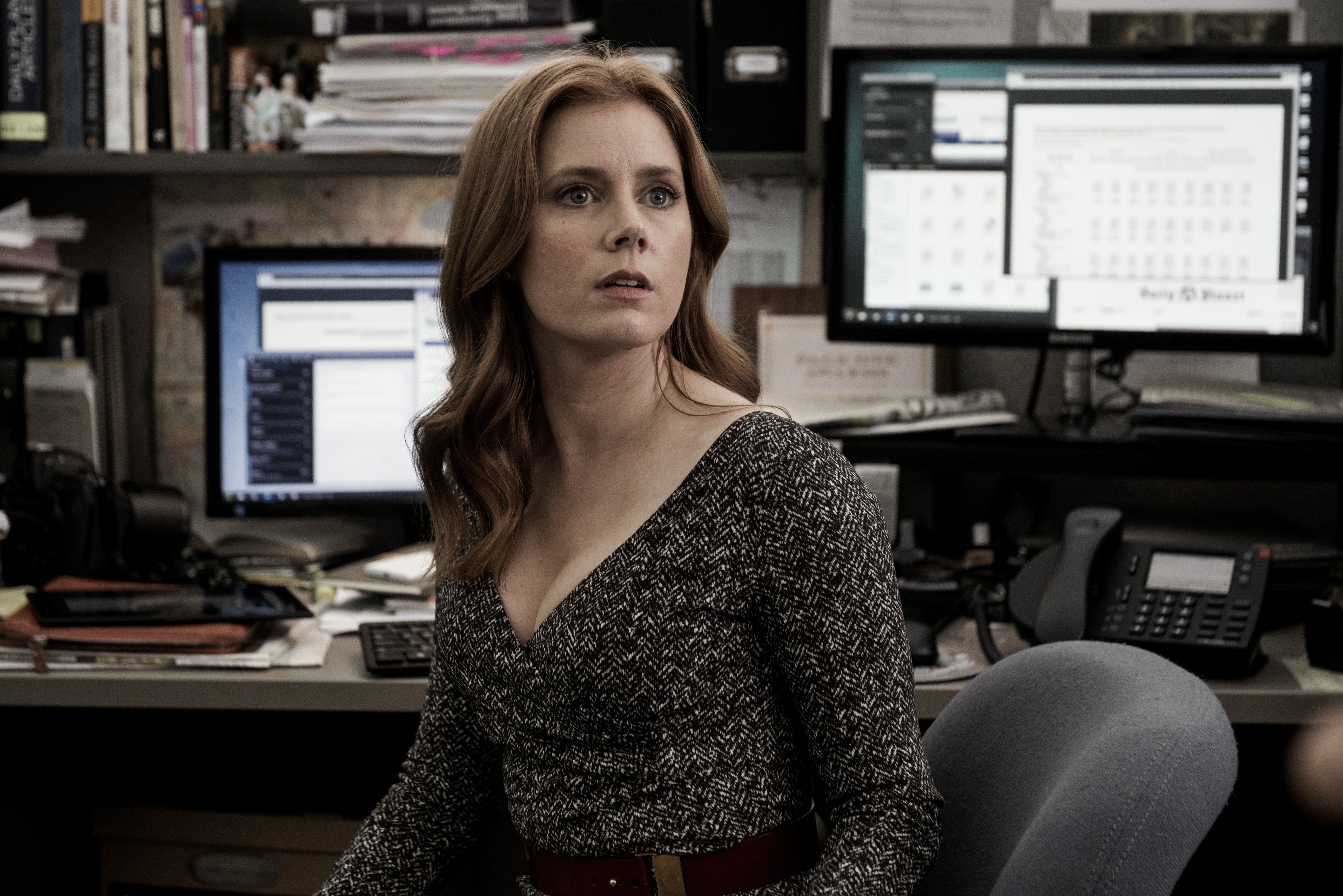 Act 5: The plots thicken, 56:44 – 1:14:10
Act 5: The plots thicken, 56:44 – 1:14:10
Act 5 leads with Lois and is primarily concerned with deepening the twists in the stories. Lois learns more about the bullet while Clark begins to learn about how deep the Batman problem goes, exacerbated by the arrangement of the prison murder and the delivery of the Polaroids of the dead inmate. Luthor enlists Wallace Keefe and sets him towards Senator Finch for unknown reasons and Bruce encounters Diana again. We are given the Knightmare scene showing a world of Superman gone wrong, and the now unresolved Flash scene. The act culminates with Bruce’s admission of his true goals to take on Superman, while Clark’s conversation with the mother of the dead inmates child will drive him to confront Batman directly.
Act 6: Complications 1:14:11 – 1:31:37
Act 6 begins to push all the stories together. Superman and Batman encounter each other for only the second time (and the first time in costume) after Superman derails Batman’s plans for the Kryptonite. Everything in this act is being set up for Lex to make his move, whether we know it’s coming or not. The only person standing in his way is Lois, with the question being will she get to Superman in time. The action in this act is clearing the deck for the next round of stories to open up by doing away with Kahina, Wallace, Finch and the Nairomi story line as their usefulness to the plot has come to an end as the stories transition. This is the mid-point shift.
Act 7: Aftermath – 1:31:38 – 1:41:46
Act 7 focuses on what the characters do in the aftermath of the Capital Building explosion. The pace of the act is slower as new pieces need to be put into play to set up the action for this latter part of the film. The act gives equal weight to Bruce, Lex and Clark; contrasting the quiet emotional interaction of Clark and Lois, the mad scientist sci-fi of Lex and the brutal, analog fury of Bruce highlighting who each cahracter is at their core. With the plotting of the first half of the movie literally blown away this act starts the transition into the second half of the film, with the scenes each providing a kind of foreshadowing of the rest of the movie to come. We end the act with the question; what will anyone do next?
Act 8: “The Knight is here” – 1:41:47 – 2:02:22
Act 8 is the longest act in the film and, as the end of the middle section, has a lot of heavy lifting to do to get us into the final section of the film. This is the last act where any new character information will be presented as Bruce, Clark and Lex will lay out what it is they are dealing with internally. No new plotting will be added to the film after this act concludes. By the time this act is finished all the dominoes will be in place for the last section of the movie to knock over..
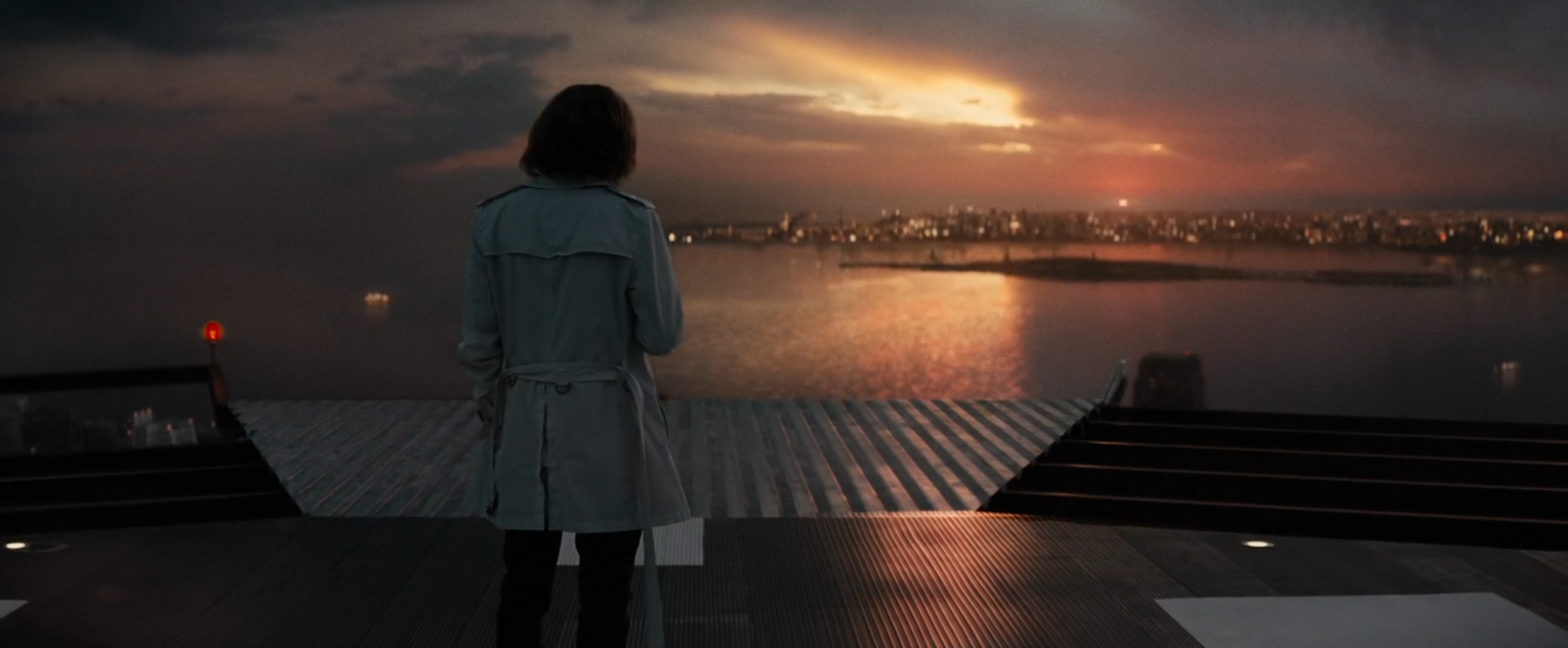
To continue to push the, “beginning, middle and end” angle these four acts really are the solid middle of the film. Part 1 introduces all of the characters and opens all the situations, so part 2 takes all those elements and brings the pot to a boil. There are very clear escalations in the plot elements that are established in the first section of the movie with all the major story lines getting their complications through the first half of this section while being unexpectedly blown away at the mid-point shift.
For those unfamiliar with the term mid-shift, as I was until recently, the idea is that about halfway through your film (or story or novel or whatever) there will be a point in which the direction of the story will change. Typical this is where the protagonist will finally stop running from their issue and decide to face it. In this film that idea has been subverted as you are led to believe that by agreeing to speak to the Committee, Superman will have a chance to turn his situation around; only to have that opportunity literally explode in his face. If one were inclined you could break this into part 2a and part 2b, marking the storytelling that goes on before and after the mid point. However, since we are tracking this film by acts within the larger sections, this would seem redundant for our purposes.
While the films critics have bemoaned the idea that so many of the films plot lines are seemingly discarded without resolution I would beg to differ. I believe the thought is that because these plot lines do not run through to the end of the film that they are somehow either not resolved or are not important. However this seems to miss the point that by the time the film reaches the Capital explosion they have all been done away with quite cleanly. The murdered inmate, Kahina Ziri, Wallace Keefe and Senator Finch all have specific roles to play to get the film to that moment. Once they have served that purpose, as far as the story goes, they are no longer necessary and thus the film discards them, but it does so in what I feel is an appropriate manner; in service of the story. By the time of the Capital explosion all those early plot lines have been tied off, which speaks not to a haphazard deserting of them but to an intentional cutting of those threads by the films villain in true villainous form. Thematically nothing has changed; the ideas that were presented in the first part of the film are still present and will carry through the films remaining time, amplified by a change in focus on the core characters that begins in act 7 as the film transitions from the relatively sedate first half to the much more energetic second half beginning with Act 9 – acts 7 and 8 being the ramp up to that. Act 8 is where Bruce, Clark and Lex lay out what it is that is emotionally challenging them in the story as it leads into the third section. Dramatically this is precisely where this information should be; putting the characters inner conflicts front and center before leading them into the final conflicts where they will have the opportunity to make the choices to resolve those challenges. I’d like to point out that act 8 is the last time we will see, “Bruce” and, “Clark” as from this point forward we will only see them in costume as Batman and Superman. Here is where we also get the infamous, “Justice League Trailers” in the form of an email that Bruce sends to Diana containing Luthor’s Metahuman files. The complaint is that the movie stops dead in it’s tracks to make room for these unnecessary Quicktimes. To detail it; the total scene time of Diana in her hotel room is three minutes of which the videos take only one of. Are these scenes necessary to move the plot of this film? No; but neither does their inclusion derail the action. If they had to be included, this was probably the best place for them.
I’d like to take this opportunity to address one area in specific that has seen some negative attention and that is Clark’s journey to the mountain and his, “conversation” with Johnathon. Some rather ridiculous people have taken to criticizing this interaction either due to some level of misunderstanding of what was happening or because it was a convenient opportunity to take shots at the film. Of course the question is of the literal nature of Johnathan Kent’s presence on the mountain with Clark. Is he a ghost? Is Clark hallucinating? Is he on drugs – yes, one critic actually asked that question. Of course the answer is that Johnathan isn’t there and Clark isn’t actually having a conversation with him and you should be able to read that in the film by observing the fact that Clark never makes eye contact with Johnathan while he’s talking and that the two aren’t speaking, “to” each other. Johnathan, “talks” and Clark appears to listen but, again, he doesn’t make eye contact with his father and never addresses him directly. It’s subtle, but it is there.
Part 3
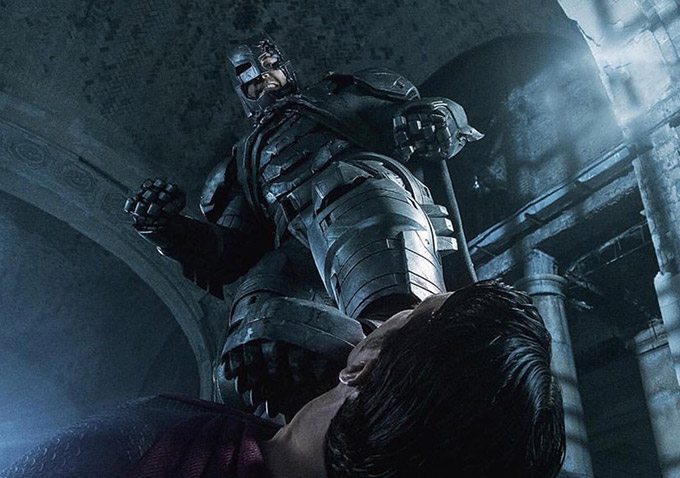 Act 9: Batman v Superman – 2:02:23 – 2:14:55
Act 9: Batman v Superman – 2:02:23 – 2:14:55
Act 9 is where the The Big Fight happens. In this act Batman will be presented with the choice that allows him to change his path, overcome his situation and find a way towards his emotional resolution. The Martha Moment represents the films second turn.
Act 10: Saving Martha – 2:14:56 – 2:28:48
Act 10 is split pretty evenly between Batman rescuing Martha and Superman taking on Doomsday. Within there, wrapped up with DoomsDay’s, “birth” is where Lex gets his opportunity to make his choice to complete his character arc. We are also given a lot of information about DoomsDay in a short period of time. This is also the act where Diana makes the choice that will bring Wonder Woman into this film series.
Act 11: The final battle – 2:28:49 – 2:42:01
The films finale, the now assembled heroes will fight to stop the monster from destroying the world. While this act is pretty much action from start to finish this is where Superman will make his choice and complete his arc. Superman’s choice will complete the finale, resolve the final conflict and provide the conceit for the film.
Act 12: The funeral – 2:42:02 – 2:54:44
The films denouement it provides the new status quo and emotional framework for the characters going forward as well as planting the seeds for where the next films in the series would have gone.

As it should be the final 4 acts are concerned with providing the resolutions to the story lines as they have been told to this point with the different stories being resolved in different acts. What’s happening in terms of storytelling is pretty straight forward at this point; Lois’s arc resolves in act 12 as her great truth, her faith in Superman, has changed the world around her. Bruce and Lex resolve their arcs in act 10; Bruce finally deals with the death of his mother and Lex completes his negative change arc by choosing to unleash DoomsDay. Of course since the movie is all about Superman he resolves his arc with the finale in act 11, which also provide the films conceit about faith. If you’ve been tracking the stories individually up to this point it should be clear what these resolutions mean for each character.
This final group of acts, or the end of the film, is also where the movie goes full on genre picture. The characters are in costume for the entirety of these last acts; even Lex is wearing what can be easily read as a lab coat if one were so inclined. Added to that is the fact that, starting with act 8 and moving into act 9, Lex goes full, “Super Villain”; kidnapping Martha, pushing Lois off of a building and creating a monster. This is when the movie really embraces it’s comic book heritage and plays into those source elements. The great majority of the films action takes place in this section and it is far further over the top than anything else that’s been seen to this point. Batman’s warehouse rescue in act 10 plays, like a great many have noted, like the Arkham series of video games from Rocksteady games. Similarly, the final battle with DoomsDay is very large in scale. This was not a fight that could be intimate and personal as, for instance, Tony vs Steve in Captain America: Civil war or Luke vs Vader in Star wars Episode V: The Empire Strikes Back. DoomsDay is not a character; not in it’s original form. Introducing the character earlier in the film would be worthless as it is still without personality or motivation and peppering the film with multiple conflicts would distract from the story being told. One could make a case for scaling back the size of the final conflict but that’s all subjective.
Similarly, there has been a criticism that the fight between Batman and Superman in act 9 isn’t long enough or big enough to serve as the centerpiece action for the story. This ignores two big pieces of functional storytelling. First, as the beginning of the final section of the film with about an hour left to go in the run time, to make the fight any larger or more grand would compromise the film makers opportunity to create an effectively large scale finale without pushing it even further than they already have. It would also serve to siphon off some of the energy from the Batman warehouse fight, which is much more important to the resolution of Batman’s arc and the advancement of his character. Second, and more important; as I’ve attempted to illustrate in a previous articles there is no actual conflict between the two characters that needs to be resolved in this manner. The storytelling in the film tells us that Superman has already once declined an open confrontation with Batman and is only fighting him now because he feels he has no other options as per the second turn – which we will discuss below. And while Batman is seeking a fight with Superman; fighting and killing him will not resolve his character arc based on the information presented in the film. So while the fight is necessary for the film to function it cannot be the resolution to the films situation because it does not deal with the source of the films plot mechanics; namely Lex Luthor. If Luthor is to be a part of the film the plot will always necessitate a last conflict to resolve his function in the film. Anyway you slice it, the fight between Batman and Superman could never be the finale to a story; hell, it isn’t even the focus point of The Dark Knight Returns, which so many people accuse this film of shamelessly aping to ill effect; it’s a ruse by Batman so he can go into hiding. And just like in this film Superman isn’t there because he, “want’s” to fight Batman. In this case while the fight was the focus of the marketing, the storytelling uses it as an experience both must go through to get to the resolutions of their character arcs.
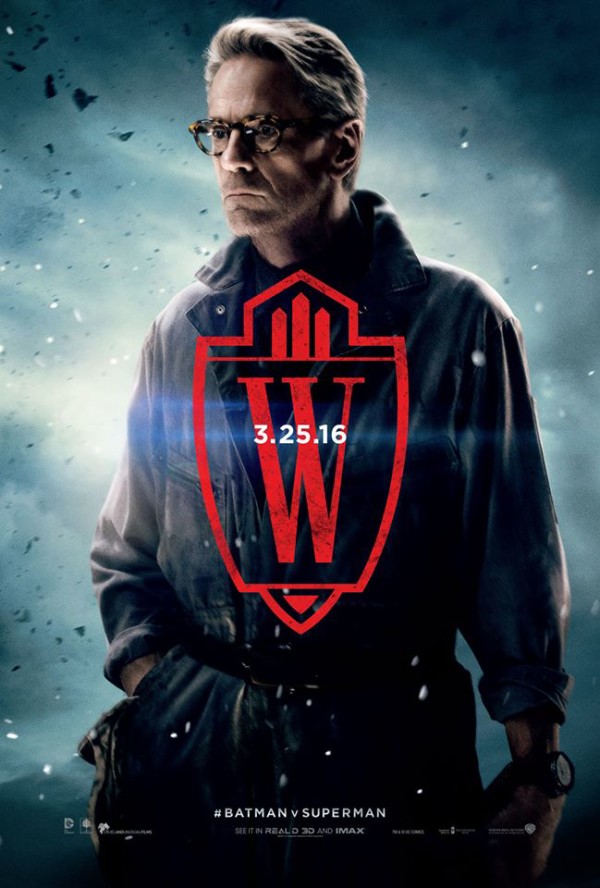 Bring It Back To Me
Bring It Back To Me
Ever since I began doing any kind of deep look at this film I have been ever more confused by the claims that the structure, or the underlying storytelling, is somehow compromised or flawed; at least in regards to the Ultimate Edition, which I consider the true form of the film. When revisiting some of these criticisms during the writing of this piece it would seem that the confusion many were experiencing is of the same type that leads to such flawed examinations of other aspects of the film and that is the result of having applied the wrong paradigm to the evaluation.
I have long been a proponent of looking at this film as a straight drama instead of a genre movie or other such type. What it appears to be from my perspective, at the very least in terms of those who commented on the act structure, is that the film had been evaluated as if it were an action film. Action films get their name because action beats drive the story forward. Typically the major sections of the film will be punctuated by an action beat; something that ups the ante to drive the characters into the next part of the film as it is these conflicts that force the plot to evolve. The few times I’ve actually come across someone attempting to actually place an act marker in this film, as opposed to just stating that the structure is screwy, they placed the end of the first act, or more appropriately the, “beginning” portion of the story, at the Capital Bombing. Under those terms this is the first, “action beat” that causes a shift in the entirety of the story as all the characters have to react to it. In reality this event, which occurs smack dab in the middle of the film is the midpoint shift. This is then typically followed by something known as the second turn. The blog at JennySoft.Com outlines the components of this as:
The hero feels he has lost everything he set out to gain.
The hero has run out of options/appears to have exhausted his last option.
Discovers that the new information he received at the story’s midpoint (see previous post on the Midpoint Shift) has led to dead end.
His goal no longer seems attainable to him. (The reader may know how the hero can attain the goal – but hero doesn’t see how at this point.)
Hero is weak, shattered, discouraged, beaten down; antagonist is going strong, appears to have victory within his/her grasp.
If the Capital Bombing at the mid point of the film in act 6 is the Midpoint Shift, then it would seem the Martha Moment in act 9would be he second shift. both characters are at their most vulnerable, Batman has an opportunity to, “win”and give Luther exactly what he wants, while Superman is in danger of losing his chance to rescue his mother and his life. Structurally the mid point shift and second turn are exactly where both of these events should be. This alone more than illustrates at least some application of basic story structure in direct opposition to the claims made by the films critics. I believe that many of these critics were thrown by difficulties in identifying where the beginning third of the film ended, as it’s not punctuated by an event, as well as by the necessity of having to track four separate stories with no clear understanding of which one is actively driving the film. The end of act 4, where the first third of the film concludes in this evaluation, is signaled by a shift in storytelling intent; which is how I choose to evaluate where the break points are. By the end of act 4 we have been introduced to almost all of the characters that will be relevant to the film and every story has been set in motion. It may not be punctuated by an explosion or a fight but there is a significant shift in storytelling intent that clearly demarcates the difference between the two sections of the film.
I would like to note that Bruce’ story gets a midpoint shift of it’s own with his failed attempt to procure the Kryptonite in act 5 of this breakdown. It’s not the same kind of film shifting event that the Capital bombing is, but it does put a kink in his plans.
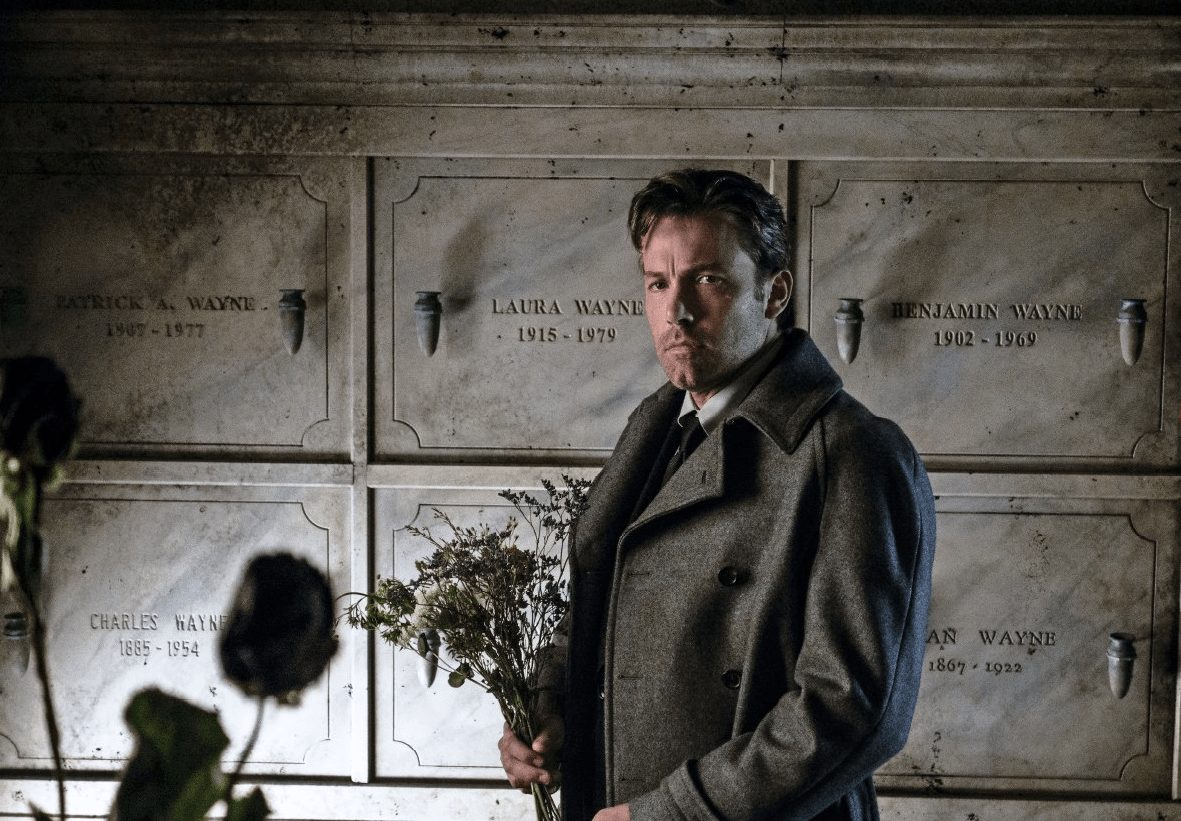
I initially had no intention of parsing the film into three sections as I felt that would be a betrayal of the basic rule I have for evaluating act breaks but I had to remind myself that being able to break a film into definite beginning, middle and end sections does not mean that the film only has three acts. That simplistic outlook is what I hope to work out of myself by writing this series. The fact that this film is so rigidly structured in the eyes of this evaluation is a choice made by the film makers and not a hard and fast rule that I would attempt to force on the films I will attempt to evaluate going forward. It must also be remembered that this evaluation, having no access to screenplays, attempts backwards engineer these films from their final presentations to get the structure. The structure of a film in it’s final form and the structure given to it in the screenplay may not always match up, so I try to stay away from addressing the screenplay as much as I can.
As I always try to make a point of stressing, this evaluation is not meant to sway opinions on whether or not a person should think the film is, “good” or that they should enjoy it if they previously had not. One of the issues that has followed this movie from the time of it’s release is the idea that not enjoying it means that the movie was poorly produced. These two ideas are not inextricably linked and should not be elevated to a state of parity if we are being honest about evaluating the film making.
It stands to reason that if one has trouble following a difficult film then the chance that they are going to enjoy it will be dramatically decreased. Add to that uncomfortable portrayals of favored childhood characters and a tone that doesn’t offer many pressure relief points and you have a recipe for a film that’s going to turn a lot of people off. I do not begrudge individuals for their emotional reaction to the film, though I do take umbrage with being told that if I do not agree with a certain way of viewing the characters or what stories can or should be told with them that I have some sort of deep emotional issues to work out. I mean I do; but I don’t need strangers telling me that simply because I like a movie they do not. What I have the densest issue with is the assertion that the work done here is somehow technically deficient being made by people who have clearly not done the diligence necessary to determine the truth of this, no matter how many videos they’ve posted or how long those videos might be. The only reason I can think of for this lack in mechanical understanding is either they are unable to suss out these issues in the manner discussed or they are just plain unwilling to do so. I’ll leave it to you to decide.
So there we have it. According to my evaluation Batman v Superman: Dawn of Justice – Ultimate Edition (damn that gets tiring to type) is a film in 12 acts. I can’t help but be impressed by the work that went in to making this film as, like any film, it had to have been exceedingly difficult to do. I’ve gained a new appreciation for the art of putting together a project like this; the skill and effort it takes to develop all these elements and arrange them to create a story. I’ve reached a point of understanding that I do not feel that I can no longer, in good conscience, talk any amount of shit about the people who do this job. I may not like what they produce, but anyone who can put together a functional screenplay is further ahead of the game than most people realize. I hope that by reading this you not only gain a new appreciation for this film, but that you find a new level of appreciation for the work that goes in to all the films that entertain us, enlighten us and just plain make our lives more fun.
Clever endings aren’t my bag.
Laterz
Batman v Superman: Dawn of Justice – Ultimate Edition is available on Blu-ray and 4K UHD from Amazon.Com
(Follow *NotThePopularOpinion on Twitter @Only_Grey)
Share the post "It’s All An Act! Batman v Superman: Dawn of Justice – Ultimate Edition"

